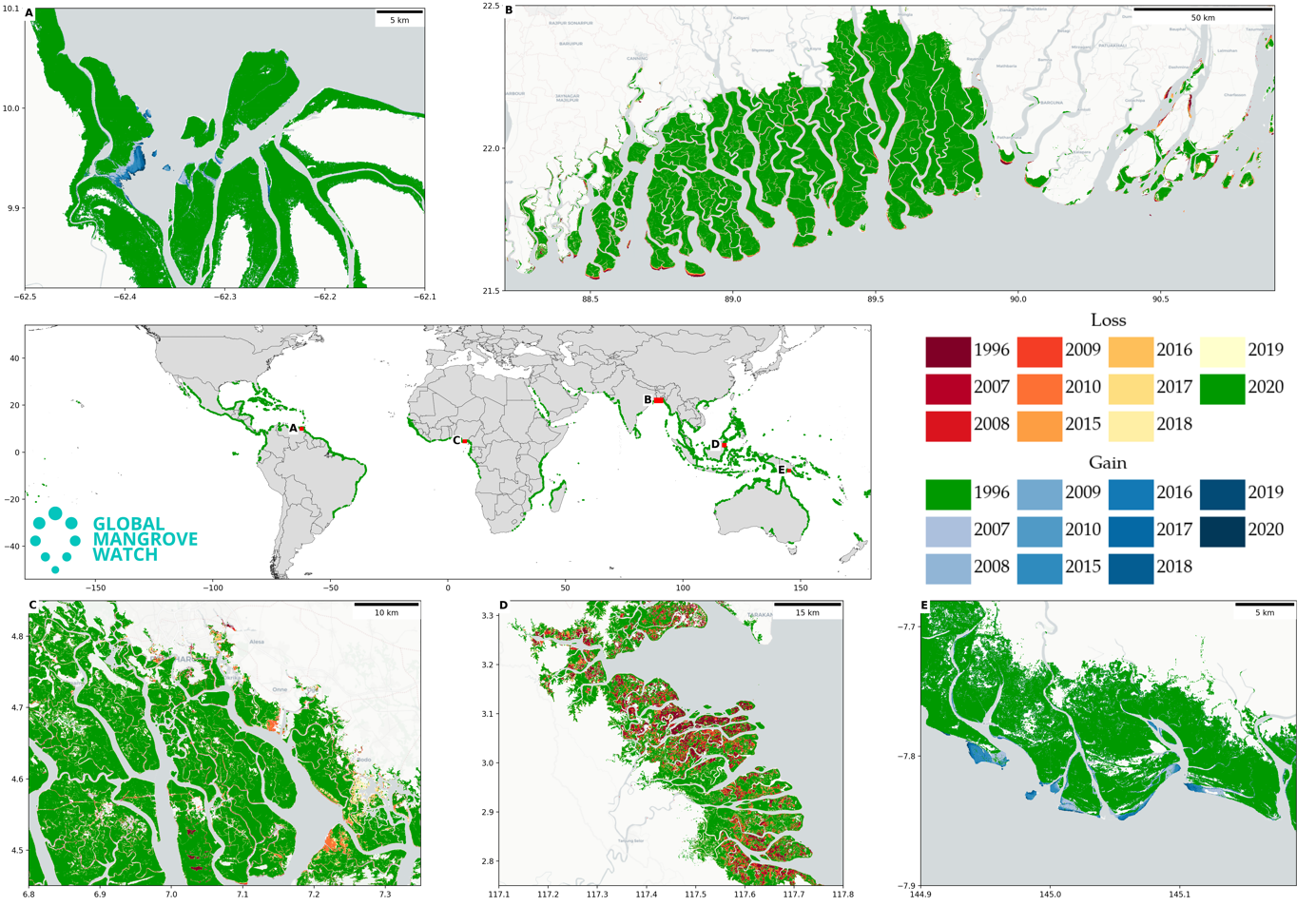The mangrove maps were derived in two steps:
The baseline maps are derived using a Random Forest classification of a combination of radar and optical satellite data. The classification is confined within a mangrove habitat mask, which defines regions where mangrove ecosystems might be expected to exist. The mangrove habitat definition is based on geographical parameters such as latitude, elevation and distance from ocean water. Training for the habitat mask and classification of the mangrove mask is based on randomly sampling several million points using historical mangrove maps (for the year 2000) of Giri et al. (2011) and Spalding et al. (2010) and the water occurrence dataset by Pekel et al. (2017). This baseline was updated subsequently, following user feedback, using over 11,000 Sentinel-2 scenes and an updated mangrove habitat mask (Bunting et al., 2022a).
The maps for years other than the baseline year were initially generated by detecting changes (gains and loss) from the baseline using JERS-1 SAR (1996), ALOS PALSAR (2007, 2008, 2009) and ALOS-2 PALSAR-2 (2015 – 2020) data (Bunting et al., 2022b). The analysis was then repeated using each subsequent year as the baseline, thereby producing 10 mangrove extent maps for each year. The final annual maps were then obtained through majority filtering where more than five extent maps needed to have identified a pixel as mangroves.
 Bunting et al., 2022
Bunting et al., 2022Technical Characteristics
Spatial resolution: 25m
Geographical coverage: Global (all countries with mangroves)
Temporal coverage:1996, 2007, 2008, 2009, 2010 (baseline year).Annual data 2015-2020.
Update frequency: Annual from 2021. Next release scheduled for mid-2025.
Format: GIS shapefile (.shp), geocoded raster (Geotiff), numerical statistics (.xslx)
Data Policy: Public open (Creative Commons CC BY 4.0)
Associated Guidance and User Manual
Global Mangrove Watch Platform: www.globalmangrovewatch.org
Web address for dataset download:
UNEP-WCMC (vector data)
JAXA (raster data from Q4/2021)
Zenodo Data Repository (all v3.0 datasets)
Points of contact for queries
Dr. Ake Rosenqvist
GMW and K&C Science Coordinator
solo Earth Observation (soloEO)
Tokyo 104-0054, Japan
Email: ake.rosenqvist@soloEO.com
Dr. Pete Bunting
GMW technical lead
Institute of Geography and Earth Sciences
Aberystwyth University
SY23 3DB Wales, UK
Email: pfb@aber.ac.uk
Prof. Richard Lucas
GMW scientific lead
Institute of Geography and Earth Sciences
Aberystwyth University
SY23 3DB Wales, UK
Email: richard.lucas@aber.ac.uk